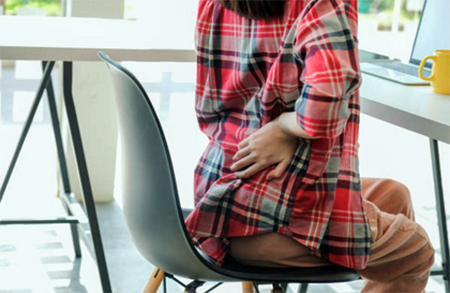Consequences of covid-19 lockdowns for nervous system and spine health
A sedentary lifestyle in lockdown, constant stress, as well as a previous coronavirus infection lead to complications that people do not even know about. British healthcare providers shared their experience.
According to neurologist John Mattews, strokes have become more frequent, there is a lot of post-COVID asthenia (general weakness), depression, because people are constantly worried about health, financial stability, and suffer from restrictions on movement. People come for treatment, rehabilitation after COVID-19. They are tormented by respiratory failure because the virus damages the lungs, chronic diseases are exacerbated, especially those associated with the vessels and nutrition of the brain.

“I see an influx of patients with herniated discs in the lumbar and cervical spine. People do little physical exercise and do not work on the development of their musculoskeletal system. Even previously active individuals have become restricted in their movements - they cannot go to the gym, for a run. Instead, they spend hours sitting or lying down. As a result, many develop hernias in the neck. Previously, this disease was primarily affecting those who work on the computer a lot, manicure masters, scientists, and laboratory assistants working with microscopes, that is, those who have the cervical spine in a static load for a long time. But now, people from other professions have similar problems. In addition, when a person is sitting, their lower back is in the most uncomfortable position. Hernias in the discs began to form even in healthy people who hadn’t had any back pain before the COVID-19 pandemic,” said neurosurgeon Leonard Kraskin.
What to do with back pain?

First of all, it is highly recommended to see a doctor. Preferably, a neurologist but you can go to your family doctor. But if you cannot see a doctor at the moment of intense and acute back pain, you should relieve pain with NSAIDs, for instance, Nimesulide, ibuprofen. Besides, muscle relaxers such as Tizanidine help to relieve muscle spasms. Acute, shooting, and sudden backache in the majority of cases is caused by the muscle spasm occurring as a response of the body to a dangerous move. This muscle spasm is aimed at restricting movement in a certain spine section. It can occur, for instance, when you lift heavy weight or bend over. Muscle relaxers and pain killers can help relieve pain in just a couple of days. During this time, it is advised to observe bed rest. If it is impossible, you should at least move cautiously and do not lift anything heavier than 4 lbs. Once the shooting is gone, you can start gently stretching your spine on a yoga mat or on the floor. Do basic stretching exercising in a comfortable amplitude of motion. Exercises can be uncomfortable at first but they must not induce shooting pain.
Remember that even once the pain is relieved, it doesn’t mean that this problem won’t occur in the future. 90% of people who had shooting back pain in the past year have it several times a year. This means that you need to go to a doctor once you are able to and undergo all necessary tests. It can be an X-ray, CT or MRI, blood test, and others. The basic treatment plan that we shared here, NSAIDs and muscle relaxers, is common for shooting back pain. But if your doctor finds out the underlying cause, for instance, hernia, or vitamin deficit, they will prescribe additional treatment chosen individually for you. And if you don’t have any contraindications, you should continue working on stretching your spine and strengthening muscles to avoid acute back pain in the future.
If you have acute back pains several times a year, it is preferable to have NSAIDs and muscle relaxers at hand. But keep in mind that painkillers must not be used for more than 5 days without consulting a doctor. You can buy these medications at our online drugstore without a prescription but it is still advised to follow your doctor’s recommendations.
(Updated at Apr 13 / 2024)